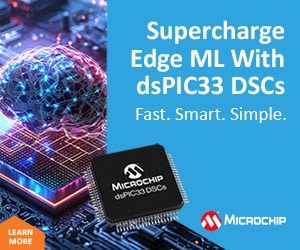As satellites begin linking directly to smartphones, geography may no longer dictate mobile access. The real question now is not whether global connectivity will arrive, but when, and who will ensure it remains inclusive and equitable.
Direct-to-cellular (DTC) communication is a breakthrough that enables standard smartphones to connect directly to satellites, requiring no extra hardware. It extends mobile coverage to remote regions, addressing gaps that traditional networks have struggled to close for a long time.
This piece explores the core of DTC technology, its key applications, significant challenges, and its potential to transform global communication.
Understanding direct-to-cellular technology
Direct-to-cellular communication, also known as satellite-to-cellular, involves using low Earth orbit (LEO) satellites to establish a direct connection with mobile devices. Traditional satellite phones require specialised handsets, often bulky and expensive, to establish a link with satellites. In contrast, DTC technology utilises existing smartphone antennas and cellular bands, making connectivity more accessible and convenient.
LEO satellite constellations launched by companies such as SpaceX’s Starlink, AST SpaceMobile, and Lynk Global aim to provide direct broadband and mobile connectivity to standard smartphones, requiring minimal user-end changes.
How direct-to-cellular works
For direct-to-cellular connectivity, satellites utilise a technology that mimics terrestrial cellular networks, enabling mobile devices to connect seamlessly without requiring ground infrastructure. The satellites orbit closer to Earth than traditional geostationary satellites, which reduces latency and enables faster communication.
Each satellite functions as a floating cellular tower, broadcasting signals to the ground. Smartphones within the satellite’s coverage area can receive these signals and send data back, enabling two-way communication. However, current connections are limited to basic messaging and emergency services, as voice and data capabilities require further advances in satellite and antenna technology.
Potential applications
Direct-to-cellular technology unlocks a wide range of use cases, particularly in scenarios where traditional mobile networks fall short.
Disaster response and emergency services:
DTC technology could revolutionise emergency communication by providing a reliable service in disaster-stricken areas where terrestrial networks are damaged. Immediate satellite connectivity could enable faster coordination among emergency responders, helping to save lives.
Rural and remote connectivity:
In many parts of the world, especially remote and rural regions, establishing terrestrial infrastructure is both costly and logistically challenging. DTC can provide consistent mobile connectivity in such underserved areas, supporting education, healthcare, and economic development.
Environmental monitoring and conservation:
DTC connectivity enables the direct transmission of data from remote environmental sensors to monitoring systems, supporting wildlife conservation, climate monitoring, and biodiversity tracking.
Global supply chain:
Logistics and shipping companies could particularly benefit from continuous communication with vessels operating in remote or maritime regions.
Challenges and limitations
While the potential of DTC technology is exciting, several challenges remain:
Signal interference:
Satellites operate at different frequencies compared to traditional cell towers. Integrating the two systems without interference requires complex coordination and technological development, particularly for smartphones to switch seamlessly between terrestrial and satellite networks.
Power requirements:
DTC communication demands more power than standard cellular connections. Connecting with LEO satellites may require additional energy, which could potentially affect battery life.
Data speed and bandwidth:
Due to limited spectrum availability and technical constraints, initial DTC services may offer slower speeds and reduced bandwidth compared to terrestrial networks. Expanding capacity will require further innovation.
Regulatory and cost barriers:
The regulatory framework for satellite communications is complex, encompassing both international and national policies on frequency allocation, orbital management, and space traffic management. Moreover, launching and maintaining satellite constellations is expensive, posing challenges to making DTC affordable for consumers.
The future of direct-to-cellular technology
The development of direct-to-cellular technology aligns with the broader vision of global connectivity, often referred to as the ‘Internet of Everywhere’. In the years ahead, advances in satellite and smartphone technology are expected to enable faster data speeds and more reliable service. Companies such as SpaceX, in collaboration with telecom providers, are exploring hybrid networks that allow seamless transitions between satellite and terrestrial coverage, moving closer to a universally connected future.
Direct-to-cellular technology marks a transformative step in mobile communication. By enabling direct links between satellites and smartphones, it holds the potential to connect even the most remote and underserved regions. Although challenges remain, such as bandwidth limitations, higher power demands, and complex regulations, the steady progress in DTC technology is promising. As this innovation evolves, it may well redefine how societies connect, communicate, and bridge the global digital divide. DTC could become the catalyst that redefines connectivity across regions, industries, and populations, helping close the global digital divide.
References:
- An article on ‘Direct to Cellular’ appeared in SatMagazine.com
- Several other web pages were also referenced
Author: Vinayak Ramachandra Adkoli. The author holds a B.E. in Industrial Production and has served as a lecturer in three polytechnics for over 10 years. He is also a freelance writer and cartoonist.







